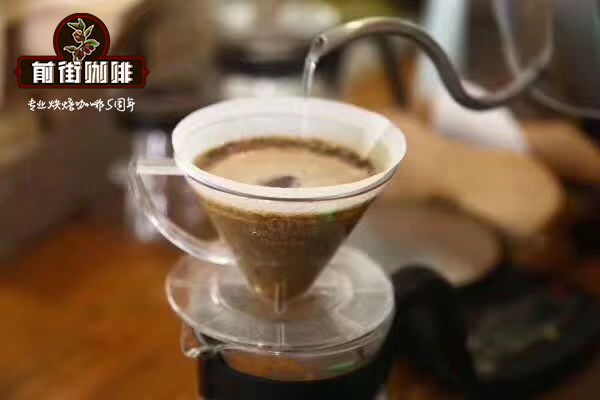Which varieties of boutique coffee beans are produced all over the world, do you know?

Professional coffee knowledge exchange more coffee bean information please follow the coffee workshop (Wechat official account cafe_style)
Qianjie-A brief introduction of boutique coffee producing areas and varieties
Coffee trees are planted in the equatorial belt of the Tropic of Cancer and the Tropic of Cancer, known as the "coffee belt".
While there are 62 coffee-growing countries in the world, there are three major coffee-growing areas, each with its own unique landscape, climate and coffee flavor, which in turn affect local coffee cultivation and processing.
Coffee is divided into three regions: Latin America, Africa and Asia-Pacific.
Latin America: its coffee-growing areas include Mexico, Central and South American countries. Latin American coffee tends to have a balanced flavor like cocoa or nuts and has fresh and comfortable acidity.
Africa: the hometown of exotic coffee sets the standard of high quality coffee. Most African coffee is rich and juicy, with floral and citrus flavors, berries and spices.
Asia / Pacific: its coffee producing areas include Indonesia Islands, Timor-Leste, South Asia and Papua New Guinea. More use of "semi-washing" for processing, Asia-Pacific coffee is mellow, sweet, smooth, with herbal and earthy aroma.
Arabica also has many subspecies, all derived from the oldest Typica in Ethiopia and Bourbon in Yemen, which have been transplanted into Central and South America or Asia. But boutique coffee mainly refers to the carefully cultivated high-altitude Arabica, the variety is not too many. The rough classification is listed below.
Ancient native species:
Typica: the oldest native variety in Ethiopia, all Arabica are derived from Tibika. The top leaf of Tiebika is bronzed and the bean body is oval or thin in shape; the flavor is elegant, but the physique is weak, the disease resistance is poor and the fruit yield is less. Excellent manor beans such as the Blue Mountains of Jamaica, Manning of Sumatra and Kona of Hawaii all belong to Tibika.
Bourbon: a variant of the early (prehistoric coffee) Tibika that changed its shape from thin to round after it was transplanted to Yemen. It was named bourbon in 1715 after France transplanted round beans from Yemeni mocha to the island of Bourbon on the east coast of Africa (renamed Reunion after the French Revolution). Bourbon beans spread to Brazil and Central and South America in 1727, and the British transplanted Yemeni mochas to St. Helena Island (where Napoleon was later imprisoned) in 1732. Bourbon is the winner of the American boutique coffee cup test.
One of the characteristics is that the top leaf of Tibica is bronzed.
Gene mutant Bourbon Pointu: it was found in Bourbon Island in 1810 that the bean changed from round to pointed, with only half the caffeine content, but in small amounts, weak and extremely precious (mostly cultivated in the laboratory).
Elephant bean (Maragogype, or Elephant Bean): Tibica's best-known variety of beans, first discovered in 1870 in the Maragogype bean-producing region of the state of Bahia in northeastern Brazil, is at least three times larger than the average Arabica, hence the name. The taste of elephant bean is poor in low altitude area, but it has better flavor at high altitude, mild sour taste and sweet fragrance.
Geisha (Geisha): a derivative of the Tibika family, it was exported from the Geisha Mountains of southern Ethiopia in 1931 (Geisha is synonymous with Japanese geisha). After being unknown in many countries, it was transplanted to Panama in the 1960s and did not begin to win cup tests until 2005.
Knowledge: in terms of coffee flavor, the taste of coffee obtained from commercial beans is much lower than that of high-quality coffee beans. Generally, commercial beans are chosen to be used for blending. After mixing beans, they can be used to make Italian coffee such as lattes and kapos.
In short: Qianjie is a coffee research hall, happy to share the knowledge about coffee with you, we share unreservedly just to make more friends fall in love with coffee, and there will be three low-discount coffee activities every month. The reason is that Qianjie wants to make more friends drink the best coffee at the lowest price, which has been Qianjie's tenet for 6 years!
END
Important Notice :
前街咖啡 FrontStreet Coffee has moved to new addredd:
FrontStreet Coffee Address: 315,Donghua East Road,GuangZhou
Tel:020 38364473
- Prev

Is Fine Coffee defined as the Fine Coffee in Coffee? what kind of coffee should speak on the basis of results?
Professional coffee knowledge exchange more coffee bean information please follow the coffee workshop (Wechat official account cafe_style) front street-boutique coffee introduction the American Fine Coffee Association pointed out that through the comprehensive cup test (blind test) score of more than 80 points can be defined as boutique coffee beans, if the blind test score of less than 80 points, then classified as commercial beans. In 1978, Ms. Knudsen was in Montebourg, France.
- Next

Coffee flavor wheel analysis of coffee aroma thousands of world coffee flavor wheel 2019 do you have a new version
Professional coffee knowledge exchange more coffee bean information please follow the coffee workshop (Wechat official account cafe_style) Front Street-Coffee flavor wheel introduction in the coffee flavor wheel is basically defined as two; one is to record the coffee flavor, the other is to make coffee Xiaobai have a more intuitive understanding of the coffee flavor, all by extracting the corresponding aroma substances from different substances
Related
- Beginners will see the "Coffee pull flower" guide!
- What is the difference between ice blog purified milk and ordinary milk coffee?
- Why is the Philippines the largest producer of crops in Liberia?
- For coffee extraction, should the fine powder be retained?
- How does extracted espresso fill pressed powder? How much strength does it take to press the powder?
- How to make jasmine cold extract coffee? Is the jasmine + latte good?
- Will this little toy really make the coffee taste better? How does Lily Drip affect coffee extraction?
- Will the action of slapping the filter cup also affect coffee extraction?
- What's the difference between powder-to-water ratio and powder-to-liquid ratio?
- What is the Ethiopian local species? What does it have to do with Heirloom native species?

